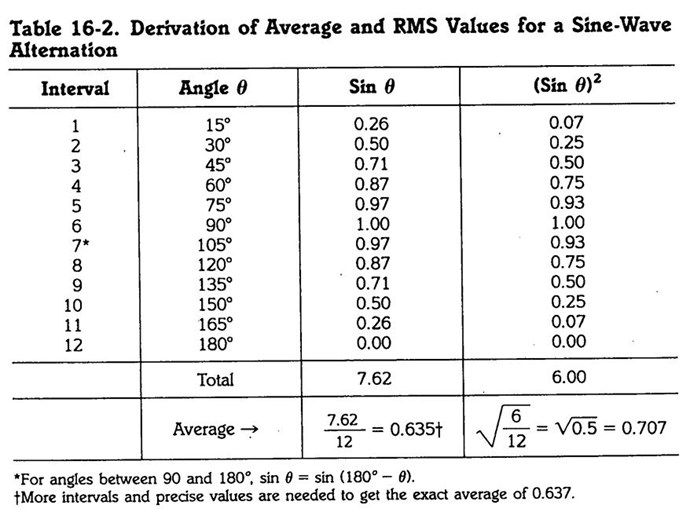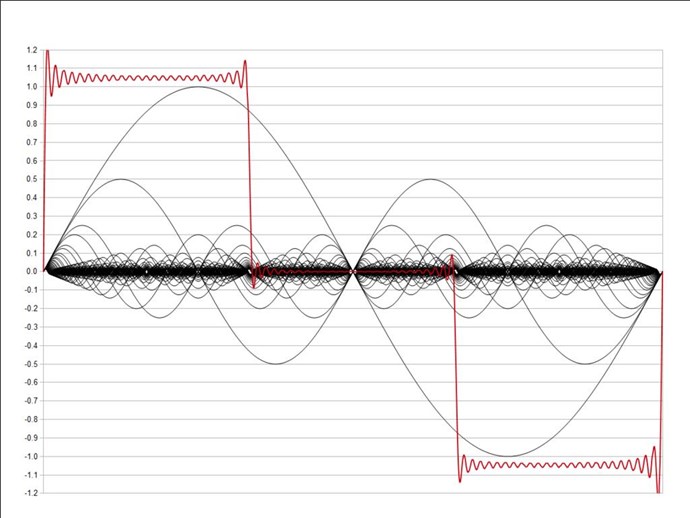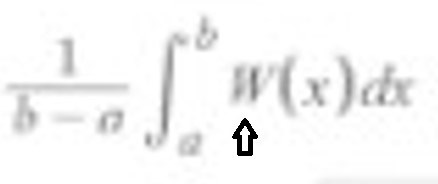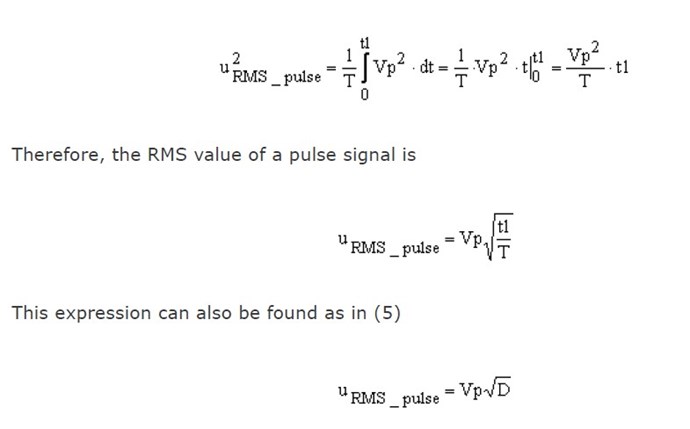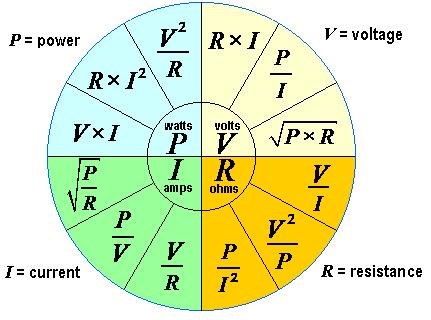My Friends,
I want to share an experiment I have done, with Math Functions. I am taking 360 Degrees and converting each Degree to a point on a Sinusoidal Waveform:
So, the Math:
double Point = Math.Sin((Math.PI * i) / 180);
i = 0 then Point = 0.0;
i = 1 then Point = 0.017452406437283512;
i = 2 then Point = 0.034899496702500969;
and so on...
Example 1
The Below Data Points Represent the Data Points a Scope might capture from a Sine wave:
Sine Data Point: 0
Sine Data Point: 0.0174524064372835
Sine Data Point: 0.034899496702501
Sine Data Point: 0.0523359562429438
Sine Data Point: 0.0697564737441253
Sine Data Point: 0.0871557427476582
Sine Data Point: 0.104528463267653
Sine Data Point: 0.121869343405147
Sine Data Point: 0.139173100960065
Sine Data Point: 0.156434465040231
Sine Data Point: 0.17364817766693
Sine Data Point: 0.190808995376545
Sine Data Point: 0.207911690817759
Sine Data Point: 0.224951054343865
Sine Data Point: 0.241921895599668
Sine Data Point: 0.258819045102521
Sine Data Point: 0.275637355816999
Sine Data Point: 0.292371704722737
Sine Data Point: 0.309016994374947
Sine Data Point: 0.325568154457157
Sine Data Point: 0.342020143325669
Sine Data Point: 0.3583679495453
Sine Data Point: 0.374606593415912
Sine Data Point: 0.390731128489274
Sine Data Point: 0.4067366430758
Sine Data Point: 0.422618261740699
Sine Data Point: 0.438371146789077
Sine Data Point: 0.453990499739547
Sine Data Point: 0.469471562785891
Sine Data Point: 0.484809620246337
Sine Data Point: 0.5
Sine Data Point: 0.515038074910054
Sine Data Point: 0.529919264233205
Sine Data Point: 0.544639035015027
Sine Data Point: 0.559192903470747
Sine Data Point: 0.573576436351046
Sine Data Point: 0.587785252292473
Sine Data Point: 0.601815023152048
Sine Data Point: 0.615661475325658
Sine Data Point: 0.629320391049837
Sine Data Point: 0.642787609686539
Sine Data Point: 0.656059028990507
Sine Data Point: 0.669130606358858
Sine Data Point: 0.681998360062498
Sine Data Point: 0.694658370458997
Sine Data Point: 0.707106781186547
Sine Data Point: 0.719339800338651
Sine Data Point: 0.73135370161917
Sine Data Point: 0.743144825477394
Sine Data Point: 0.754709580222772
Sine Data Point: 0.766044443118978
Sine Data Point: 0.777145961456971
Sine Data Point: 0.788010753606722
Sine Data Point: 0.798635510047293
Sine Data Point: 0.809016994374947
Sine Data Point: 0.819152044288992
Sine Data Point: 0.829037572555042
Sine Data Point: 0.838670567945424
Sine Data Point: 0.848048096156426
Sine Data Point: 0.857167300702112
Sine Data Point: 0.866025403784439
Sine Data Point: 0.874619707139396
Sine Data Point: 0.882947592858927
Sine Data Point: 0.891006524188368
Sine Data Point: 0.898794046299167
Sine Data Point: 0.90630778703665
Sine Data Point: 0.913545457642601
Sine Data Point: 0.92050485345244
Sine Data Point: 0.927183854566787
Sine Data Point: 0.933580426497202
Sine Data Point: 0.939692620785908
Sine Data Point: 0.945518575599317
Sine Data Point: 0.951056516295154
Sine Data Point: 0.956304755963035
Sine Data Point: 0.961261695938319
Sine Data Point: 0.965925826289068
Sine Data Point: 0.970295726275996
Sine Data Point: 0.974370064785235
Sine Data Point: 0.978147600733806
Sine Data Point: 0.981627183447664
Sine Data Point: 0.984807753012208
Sine Data Point: 0.987688340595138
Sine Data Point: 0.99026806874157
Sine Data Point: 0.992546151641322
Sine Data Point: 0.994521895368273
Sine Data Point: 0.996194698091746
Sine Data Point: 0.997564050259824
Sine Data Point: 0.998629534754574
Sine Data Point: 0.999390827019096
Sine Data Point: 0.999847695156391
Sine Data Point: 1
Sine Data Point: 0.999847695156391
Sine Data Point: 0.999390827019096
Sine Data Point: 0.998629534754574
Sine Data Point: 0.997564050259824
Sine Data Point: 0.996194698091746
Sine Data Point: 0.994521895368273
Sine Data Point: 0.992546151641322
Sine Data Point: 0.99026806874157
Sine Data Point: 0.987688340595138
Sine Data Point: 0.984807753012208
Sine Data Point: 0.981627183447664
Sine Data Point: 0.978147600733806
Sine Data Point: 0.974370064785235
Sine Data Point: 0.970295726275996
Sine Data Point: 0.965925826289068
Sine Data Point: 0.961261695938319
Sine Data Point: 0.956304755963036
Sine Data Point: 0.951056516295154
Sine Data Point: 0.945518575599317
Sine Data Point: 0.939692620785908
Sine Data Point: 0.933580426497202
Sine Data Point: 0.927183854566787
Sine Data Point: 0.92050485345244
Sine Data Point: 0.913545457642601
Sine Data Point: 0.90630778703665
Sine Data Point: 0.898794046299167
Sine Data Point: 0.891006524188368
Sine Data Point: 0.882947592858927
Sine Data Point: 0.874619707139396
Sine Data Point: 0.866025403784439
Sine Data Point: 0.857167300702112
Sine Data Point: 0.848048096156426
Sine Data Point: 0.838670567945424
Sine Data Point: 0.829037572555042
Sine Data Point: 0.819152044288992
Sine Data Point: 0.809016994374947
Sine Data Point: 0.798635510047293
Sine Data Point: 0.788010753606722
Sine Data Point: 0.777145961456971
Sine Data Point: 0.766044443118978
Sine Data Point: 0.754709580222772
Sine Data Point: 0.743144825477394
Sine Data Point: 0.731353701619171
Sine Data Point: 0.719339800338651
Sine Data Point: 0.707106781186548
Sine Data Point: 0.694658370458997
Sine Data Point: 0.681998360062499
Sine Data Point: 0.669130606358858
Sine Data Point: 0.656059028990507
Sine Data Point: 0.642787609686539
Sine Data Point: 0.629320391049838
Sine Data Point: 0.615661475325658
Sine Data Point: 0.601815023152048
Sine Data Point: 0.587785252292473
Sine Data Point: 0.573576436351046
Sine Data Point: 0.559192903470747
Sine Data Point: 0.544639035015027
Sine Data Point: 0.529919264233205
Sine Data Point: 0.515038074910054
Sine Data Point: 0.5
Sine Data Point: 0.484809620246337
Sine Data Point: 0.469471562785891
Sine Data Point: 0.453990499739547
Sine Data Point: 0.438371146789077
Sine Data Point: 0.4226182617407
Sine Data Point: 0.4067366430758
Sine Data Point: 0.390731128489274
Sine Data Point: 0.374606593415912
Sine Data Point: 0.3583679495453
Sine Data Point: 0.342020143325669
Sine Data Point: 0.325568154457157
Sine Data Point: 0.309016994374948
Sine Data Point: 0.292371704722737
Sine Data Point: 0.275637355817
Sine Data Point: 0.258819045102521
Sine Data Point: 0.241921895599668
Sine Data Point: 0.224951054343865
Sine Data Point: 0.207911690817759
Sine Data Point: 0.190808995376545
Sine Data Point: 0.17364817766693
Sine Data Point: 0.156434465040231
Sine Data Point: 0.139173100960066
Sine Data Point: 0.121869343405148
Sine Data Point: 0.104528463267654
Sine Data Point: 0.0871557427476586
Sine Data Point: 0.0697564737441255
Sine Data Point: 0.0523359562429438
Sine Data Point: 0.0348994967025007
Sine Data Point: 0.0174524064372834
Sine Data Point: 1.22460635382238E-16
Sine Data Point: -0.0174524064372832
Sine Data Point: -0.0348994967025009
Sine Data Point: -0.0523359562429436
Sine Data Point: -0.0697564737441248
Sine Data Point: -0.0871557427476579
Sine Data Point: -0.104528463267653
Sine Data Point: -0.121869343405148
Sine Data Point: -0.139173100960066
Sine Data Point: -0.156434465040231
Sine Data Point: -0.17364817766693
Sine Data Point: -0.190808995376545
Sine Data Point: -0.207911690817759
Sine Data Point: -0.224951054343865
Sine Data Point: -0.241921895599668
Sine Data Point: -0.25881904510252
Sine Data Point: -0.275637355816999
Sine Data Point: -0.292371704722736
Sine Data Point: -0.309016994374948
Sine Data Point: -0.325568154457157
Sine Data Point: -0.342020143325669
Sine Data Point: -0.3583679495453
Sine Data Point: -0.374606593415912
Sine Data Point: -0.390731128489274
Sine Data Point: -0.4067366430758
Sine Data Point: -0.422618261740699
Sine Data Point: -0.438371146789077
Sine Data Point: -0.453990499739546
Sine Data Point: -0.469471562785891
Sine Data Point: -0.484809620246337
Sine Data Point: -0.5
Sine Data Point: -0.515038074910054
Sine Data Point: -0.529919264233205
Sine Data Point: -0.544639035015027
Sine Data Point: -0.559192903470747
Sine Data Point: -0.573576436351046
Sine Data Point: -0.587785252292473
Sine Data Point: -0.601815023152048
Sine Data Point: -0.615661475325658
Sine Data Point: -0.629320391049838
Sine Data Point: -0.642787609686539
Sine Data Point: -0.656059028990507
Sine Data Point: -0.669130606358858
Sine Data Point: -0.681998360062498
Sine Data Point: -0.694658370458997
Sine Data Point: -0.707106781186547
Sine Data Point: -0.719339800338651
Sine Data Point: -0.73135370161917
Sine Data Point: -0.743144825477394
Sine Data Point: -0.754709580222772
Sine Data Point: -0.766044443118978
Sine Data Point: -0.777145961456971
Sine Data Point: -0.788010753606722
Sine Data Point: -0.798635510047293
Sine Data Point: -0.809016994374947
Sine Data Point: -0.819152044288992
Sine Data Point: -0.829037572555041
Sine Data Point: -0.838670567945424
Sine Data Point: -0.848048096156426
Sine Data Point: -0.857167300702112
Sine Data Point: -0.866025403784438
Sine Data Point: -0.874619707139396
Sine Data Point: -0.882947592858927
Sine Data Point: -0.891006524188368
Sine Data Point: -0.898794046299167
Sine Data Point: -0.90630778703665
Sine Data Point: -0.913545457642601
Sine Data Point: -0.92050485345244
Sine Data Point: -0.927183854566787
Sine Data Point: -0.933580426497202
Sine Data Point: -0.939692620785908
Sine Data Point: -0.945518575599317
Sine Data Point: -0.951056516295154
Sine Data Point: -0.956304755963035
Sine Data Point: -0.961261695938319
Sine Data Point: -0.965925826289068
Sine Data Point: -0.970295726275996
Sine Data Point: -0.974370064785235
Sine Data Point: -0.978147600733806
Sine Data Point: -0.981627183447664
Sine Data Point: -0.984807753012208
Sine Data Point: -0.987688340595138
Sine Data Point: -0.99026806874157
Sine Data Point: -0.992546151641322
Sine Data Point: -0.994521895368273
Sine Data Point: -0.996194698091746
Sine Data Point: -0.997564050259824
Sine Data Point: -0.998629534754574
Sine Data Point: -0.999390827019096
Sine Data Point: -0.999847695156391
Sine Data Point: -1
Sine Data Point: -0.999847695156391
Sine Data Point: -0.999390827019096
Sine Data Point: -0.998629534754574
Sine Data Point: -0.997564050259824
Sine Data Point: -0.996194698091746
Sine Data Point: -0.994521895368273
Sine Data Point: -0.992546151641322
Sine Data Point: -0.99026806874157
Sine Data Point: -0.987688340595138
Sine Data Point: -0.984807753012208
Sine Data Point: -0.981627183447664
Sine Data Point: -0.978147600733806
Sine Data Point: -0.974370064785235
Sine Data Point: -0.970295726275997
Sine Data Point: -0.965925826289068
Sine Data Point: -0.961261695938319
Sine Data Point: -0.956304755963035
Sine Data Point: -0.951056516295154
Sine Data Point: -0.945518575599317
Sine Data Point: -0.939692620785909
Sine Data Point: -0.933580426497202
Sine Data Point: -0.927183854566787
Sine Data Point: -0.92050485345244
Sine Data Point: -0.913545457642601
Sine Data Point: -0.90630778703665
Sine Data Point: -0.898794046299167
Sine Data Point: -0.891006524188368
Sine Data Point: -0.882947592858927
Sine Data Point: -0.874619707139396
Sine Data Point: -0.866025403784439
Sine Data Point: -0.857167300702112
Sine Data Point: -0.848048096156426
Sine Data Point: -0.838670567945424
Sine Data Point: -0.829037572555042
Sine Data Point: -0.819152044288992
Sine Data Point: -0.809016994374948
Sine Data Point: -0.798635510047293
Sine Data Point: -0.788010753606722
Sine Data Point: -0.777145961456971
Sine Data Point: -0.766044443118978
Sine Data Point: -0.754709580222772
Sine Data Point: -0.743144825477395
Sine Data Point: -0.731353701619171
Sine Data Point: -0.719339800338652
Sine Data Point: -0.707106781186548
Sine Data Point: -0.694658370458998
Sine Data Point: -0.681998360062498
Sine Data Point: -0.669130606358858
Sine Data Point: -0.656059028990507
Sine Data Point: -0.64278760968654
Sine Data Point: -0.629320391049838
Sine Data Point: -0.615661475325659
Sine Data Point: -0.601815023152048
Sine Data Point: -0.587785252292473
Sine Data Point: -0.573576436351046
Sine Data Point: -0.559192903470747
Sine Data Point: -0.544639035015027
Sine Data Point: -0.529919264233206
Sine Data Point: -0.515038074910054
Sine Data Point: -0.5
Sine Data Point: -0.484809620246337
Sine Data Point: -0.469471562785891
Sine Data Point: -0.453990499739547
Sine Data Point: -0.438371146789077
Sine Data Point: -0.4226182617407
Sine Data Point: -0.4067366430758
Sine Data Point: -0.390731128489275
Sine Data Point: -0.374606593415912
Sine Data Point: -0.358367949545301
Sine Data Point: -0.342020143325669
Sine Data Point: -0.325568154457158
Sine Data Point: -0.309016994374948
Sine Data Point: -0.292371704722736
Sine Data Point: -0.275637355817
Sine Data Point: -0.258819045102521
Sine Data Point: -0.241921895599668
Sine Data Point: -0.224951054343865
Sine Data Point: -0.20791169081776
Sine Data Point: -0.190808995376545
Sine Data Point: -0.173648177666931
Sine Data Point: -0.156434465040231
Sine Data Point: -0.139173100960066
Sine Data Point: -0.121869343405148
Sine Data Point: -0.104528463267653
Sine Data Point: -0.0871557427476583
Sine Data Point: -0.0697564737441248
Sine Data Point: -0.0523359562429444
Sine Data Point: -0.0348994967025008
Sine Data Point: -0.0174524064372844
These Data Points Draw the following Sinusoidal Waveform:
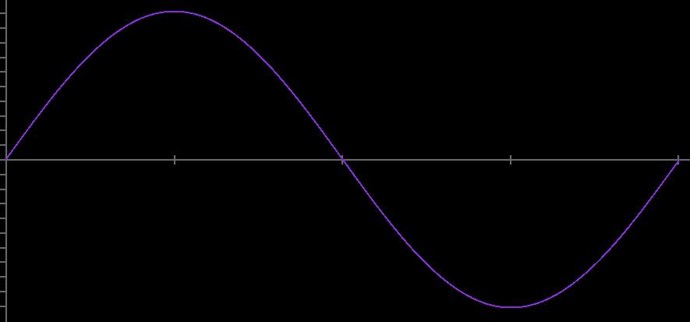
The Peak Voltage here is 1.0 Volts, so the peak voltage value is controlled and can not fluctuate. This is true for both Negative and Positive Values.
The Calculated Mean or Average and RMS is:
- Mean: 0.636603611829498
- RMS: 0.707106781186548
These are expected Values for a Sinusoidal Waveform.
The factor 0.707 for rms value is derived as the square root of the average (mean) of all the squares of the sine values. If we take the sine for each angle in the cycle, square each value, add all the squares, divide by the number of values added to obtain the average square, and then take the square root of this mean value, the answer is 0.707. These Calculations are shown in Table 16-2 for one alternation from 0 to 180°.
RMS was conceived specifically for Sinusoidal Waveforms:
For alternating electric current, RMS is equal to the value of the constant direct current that would produce the same power dissipation in a resistive load.
RMS means ‘Root Mean Square’ in mathematics. It is also referred to as quadratic mean. The RMS is very useful in many fields, particularly in electrical engineering and in the domain of signal amplifiers. RMS is very useful when the random variables in the data are negative and positive such as sinusoids.
Read more: Difference Between RMS and Average
Example 2
Now for a Alternating Square Waveform, this may be the H-Bridge DC, we get quite a different story!
Lets look at the Data Points:
Square Data Point: 0
Square Data Point: 1
Square Data Point: 1
Square Data Point: 1
Square Data Point: 1
Square Data Point: 1
Square Data Point: 1
Square Data Point: 1
Square Data Point: 1
Square Data Point: 1
Square Data Point: 1
Square Data Point: 1
Square Data Point: 1
Square Data Point: 1
Square Data Point: 1
Square Data Point: 1
Square Data Point: 1
Square Data Point: 1
Square Data Point: 1
Square Data Point: 1
Square Data Point: 1
Square Data Point: 1
Square Data Point: 1
Square Data Point: 1
Square Data Point: 1
Square Data Point: 1
Square Data Point: 1
Square Data Point: 1
Square Data Point: 1
Square Data Point: 1
Square Data Point: 1
Square Data Point: 1
Square Data Point: 1
Square Data Point: 1
Square Data Point: 1
Square Data Point: 1
Square Data Point: 1
Square Data Point: 1
Square Data Point: 1
Square Data Point: 1
Square Data Point: 1
Square Data Point: 1
Square Data Point: 1
Square Data Point: 1
Square Data Point: 1
Square Data Point: 1
Square Data Point: 1
Square Data Point: 1
Square Data Point: 1
Square Data Point: 1
Square Data Point: 1
Square Data Point: 1
Square Data Point: 1
Square Data Point: 1
Square Data Point: 1
Square Data Point: 1
Square Data Point: 1
Square Data Point: 1
Square Data Point: 1
Square Data Point: 1
Square Data Point: 1
Square Data Point: 1
Square Data Point: 1
Square Data Point: 1
Square Data Point: 1
Square Data Point: 1
Square Data Point: 1
Square Data Point: 1
Square Data Point: 1
Square Data Point: 1
Square Data Point: 1
Square Data Point: 1
Square Data Point: 1
Square Data Point: 1
Square Data Point: 1
Square Data Point: 1
Square Data Point: 1
Square Data Point: 1
Square Data Point: 1
Square Data Point: 1
Square Data Point: 1
Square Data Point: 1
Square Data Point: 1
Square Data Point: 1
Square Data Point: 1
Square Data Point: 1
Square Data Point: 1
Square Data Point: 1
Square Data Point: 1
Square Data Point: 1
Square Data Point: 1
Square Data Point: 1
Square Data Point: 1
Square Data Point: 1
Square Data Point: 1
Square Data Point: 1
Square Data Point: 1
Square Data Point: 1
Square Data Point: 1
Square Data Point: 1
Square Data Point: 1
Square Data Point: 1
Square Data Point: 1
Square Data Point: 1
Square Data Point: 1
Square Data Point: 1
Square Data Point: 1
Square Data Point: 1
Square Data Point: 1
Square Data Point: 1
Square Data Point: 1
Square Data Point: 1
Square Data Point: 1
Square Data Point: 1
Square Data Point: 1
Square Data Point: 1
Square Data Point: 1
Square Data Point: 1
Square Data Point: 1
Square Data Point: 1
Square Data Point: 1
Square Data Point: 1
Square Data Point: 1
Square Data Point: 1
Square Data Point: 1
Square Data Point: 1
Square Data Point: 1
Square Data Point: 1
Square Data Point: 1
Square Data Point: 1
Square Data Point: 1
Square Data Point: 1
Square Data Point: 1
Square Data Point: 1
Square Data Point: 1
Square Data Point: 1
Square Data Point: 1
Square Data Point: 1
Square Data Point: 1
Square Data Point: 1
Square Data Point: 1
Square Data Point: 1
Square Data Point: 1
Square Data Point: 1
Square Data Point: 1
Square Data Point: 1
Square Data Point: 1
Square Data Point: 1
Square Data Point: 1
Square Data Point: 1
Square Data Point: 1
Square Data Point: 1
Square Data Point: 1
Square Data Point: 1
Square Data Point: 1
Square Data Point: 1
Square Data Point: 1
Square Data Point: 1
Square Data Point: 1
Square Data Point: 1
Square Data Point: 1
Square Data Point: 1
Square Data Point: 1
Square Data Point: 1
Square Data Point: 1
Square Data Point: 1
Square Data Point: 1
Square Data Point: 1
Square Data Point: 1
Square Data Point: 1
Square Data Point: 1
Square Data Point: 1
Square Data Point: 1
Square Data Point: 1
Square Data Point: 1
Square Data Point: 1
Square Data Point: 1
Square Data Point: 1
Square Data Point: 1
Square Data Point: 1
Square Data Point: 1
Square Data Point: -1
Square Data Point: -1
Square Data Point: -1
Square Data Point: -1
Square Data Point: -1
Square Data Point: -1
Square Data Point: -1
Square Data Point: -1
Square Data Point: -1
Square Data Point: -1
Square Data Point: -1
Square Data Point: -1
Square Data Point: -1
Square Data Point: -1
Square Data Point: -1
Square Data Point: -1
Square Data Point: -1
Square Data Point: -1
Square Data Point: -1
Square Data Point: -1
Square Data Point: -1
Square Data Point: -1
Square Data Point: -1
Square Data Point: -1
Square Data Point: -1
Square Data Point: -1
Square Data Point: -1
Square Data Point: -1
Square Data Point: -1
Square Data Point: -1
Square Data Point: -1
Square Data Point: -1
Square Data Point: -1
Square Data Point: -1
Square Data Point: -1
Square Data Point: -1
Square Data Point: -1
Square Data Point: -1
Square Data Point: -1
Square Data Point: -1
Square Data Point: -1
Square Data Point: -1
Square Data Point: -1
Square Data Point: -1
Square Data Point: -1
Square Data Point: -1
Square Data Point: -1
Square Data Point: -1
Square Data Point: -1
Square Data Point: -1
Square Data Point: -1
Square Data Point: -1
Square Data Point: -1
Square Data Point: -1
Square Data Point: -1
Square Data Point: -1
Square Data Point: -1
Square Data Point: -1
Square Data Point: -1
Square Data Point: -1
Square Data Point: -1
Square Data Point: -1
Square Data Point: -1
Square Data Point: -1
Square Data Point: -1
Square Data Point: -1
Square Data Point: -1
Square Data Point: -1
Square Data Point: -1
Square Data Point: -1
Square Data Point: -1
Square Data Point: -1
Square Data Point: -1
Square Data Point: -1
Square Data Point: -1
Square Data Point: -1
Square Data Point: -1
Square Data Point: -1
Square Data Point: -1
Square Data Point: -1
Square Data Point: -1
Square Data Point: -1
Square Data Point: -1
Square Data Point: -1
Square Data Point: -1
Square Data Point: -1
Square Data Point: -1
Square Data Point: -1
Square Data Point: -1
Square Data Point: -1
Square Data Point: -1
Square Data Point: -1
Square Data Point: -1
Square Data Point: -1
Square Data Point: -1
Square Data Point: -1
Square Data Point: -1
Square Data Point: -1
Square Data Point: -1
Square Data Point: -1
Square Data Point: -1
Square Data Point: -1
Square Data Point: -1
Square Data Point: -1
Square Data Point: -1
Square Data Point: -1
Square Data Point: -1
Square Data Point: -1
Square Data Point: -1
Square Data Point: -1
Square Data Point: -1
Square Data Point: -1
Square Data Point: -1
Square Data Point: -1
Square Data Point: -1
Square Data Point: -1
Square Data Point: -1
Square Data Point: -1
Square Data Point: -1
Square Data Point: -1
Square Data Point: -1
Square Data Point: -1
Square Data Point: -1
Square Data Point: -1
Square Data Point: -1
Square Data Point: -1
Square Data Point: -1
Square Data Point: -1
Square Data Point: -1
Square Data Point: -1
Square Data Point: -1
Square Data Point: -1
Square Data Point: -1
Square Data Point: -1
Square Data Point: -1
Square Data Point: -1
Square Data Point: -1
Square Data Point: -1
Square Data Point: -1
Square Data Point: -1
Square Data Point: -1
Square Data Point: -1
Square Data Point: -1
Square Data Point: -1
Square Data Point: -1
Square Data Point: -1
Square Data Point: -1
Square Data Point: -1
Square Data Point: -1
Square Data Point: -1
Square Data Point: -1
Square Data Point: -1
Square Data Point: -1
Square Data Point: -1
Square Data Point: -1
Square Data Point: -1
Square Data Point: -1
Square Data Point: -1
Square Data Point: -1
Square Data Point: -1
Square Data Point: -1
Square Data Point: -1
Square Data Point: -1
Square Data Point: -1
Square Data Point: -1
Square Data Point: -1
Square Data Point: -1
Square Data Point: -1
Square Data Point: -1
Square Data Point: -1
Square Data Point: -1
Square Data Point: -1
Square Data Point: -1
Square Data Point: -1
Square Data Point: -1
Square Data Point: -1
Square Data Point: -1
Square Data Point: -1
Square Data Point: -1
These Data Points Draw the following Alternating DC Pulsed Waveform:
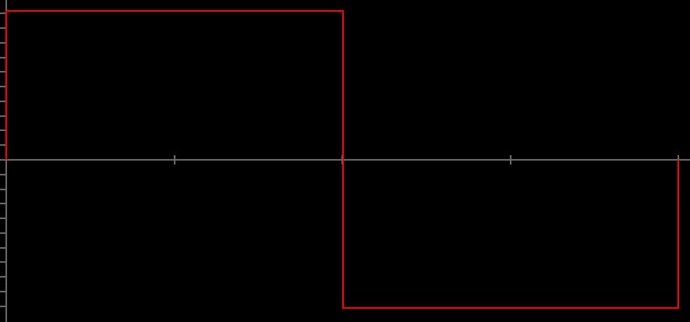
The Peak Voltage here is 1.0 Volts, so the peak voltage value is controlled and can not fluctuate. This is true for both Negative and Positive Values.
The Calculated Mean or Average and RMS is:
- Square Mean: 0.997222222222222
- Square RMS: 0.998610145263016
Now, I have to say, Both Waves have been calculated using the same Math:
double Mean = 0.0;
double Integration = 0.0;
foreach (double Point in DataPoints)
{
Mean += Math.Abs(Point);
Integration += Math.Pow(Point, 2);
}
richTextBox1.AppendText($"{Type} Mean: " + (Mean / 360).ToString() + Environment.NewLine);
richTextBox1.AppendText($"{Type} RMS: " + Math.Sqrt((Integration / 360)).ToString() + Environment.NewLine);
Example 3
Now for a Pure DC Pulsed Waveform, lets calculate the Data. First, we get the following Data Points:
Square Data Point: 0
Square Data Point: 1
Square Data Point: 1
Square Data Point: 1
Square Data Point: 1
Square Data Point: 1
Square Data Point: 1
Square Data Point: 1
Square Data Point: 1
Square Data Point: 1
Square Data Point: 1
Square Data Point: 1
Square Data Point: 1
Square Data Point: 1
Square Data Point: 1
Square Data Point: 1
Square Data Point: 1
Square Data Point: 1
Square Data Point: 1
Square Data Point: 1
Square Data Point: 1
Square Data Point: 1
Square Data Point: 1
Square Data Point: 1
Square Data Point: 1
Square Data Point: 1
Square Data Point: 1
Square Data Point: 1
Square Data Point: 1
Square Data Point: 1
Square Data Point: 1
Square Data Point: 1
Square Data Point: 1
Square Data Point: 1
Square Data Point: 1
Square Data Point: 1
Square Data Point: 1
Square Data Point: 1
Square Data Point: 1
Square Data Point: 1
Square Data Point: 1
Square Data Point: 1
Square Data Point: 1
Square Data Point: 1
Square Data Point: 1
Square Data Point: 1
Square Data Point: 1
Square Data Point: 1
Square Data Point: 1
Square Data Point: 1
Square Data Point: 1
Square Data Point: 1
Square Data Point: 1
Square Data Point: 1
Square Data Point: 1
Square Data Point: 1
Square Data Point: 1
Square Data Point: 1
Square Data Point: 1
Square Data Point: 1
Square Data Point: 1
Square Data Point: 1
Square Data Point: 1
Square Data Point: 1
Square Data Point: 1
Square Data Point: 1
Square Data Point: 1
Square Data Point: 1
Square Data Point: 1
Square Data Point: 1
Square Data Point: 1
Square Data Point: 1
Square Data Point: 1
Square Data Point: 1
Square Data Point: 1
Square Data Point: 1
Square Data Point: 1
Square Data Point: 1
Square Data Point: 1
Square Data Point: 1
Square Data Point: 1
Square Data Point: 1
Square Data Point: 1
Square Data Point: 1
Square Data Point: 1
Square Data Point: 1
Square Data Point: 1
Square Data Point: 1
Square Data Point: 1
Square Data Point: 1
Square Data Point: 1
Square Data Point: 1
Square Data Point: 1
Square Data Point: 1
Square Data Point: 1
Square Data Point: 1
Square Data Point: 1
Square Data Point: 1
Square Data Point: 1
Square Data Point: 1
Square Data Point: 1
Square Data Point: 1
Square Data Point: 1
Square Data Point: 1
Square Data Point: 1
Square Data Point: 1
Square Data Point: 1
Square Data Point: 1
Square Data Point: 1
Square Data Point: 1
Square Data Point: 1
Square Data Point: 1
Square Data Point: 1
Square Data Point: 1
Square Data Point: 1
Square Data Point: 1
Square Data Point: 1
Square Data Point: 1
Square Data Point: 1
Square Data Point: 1
Square Data Point: 1
Square Data Point: 1
Square Data Point: 1
Square Data Point: 1
Square Data Point: 1
Square Data Point: 1
Square Data Point: 1
Square Data Point: 1
Square Data Point: 1
Square Data Point: 1
Square Data Point: 1
Square Data Point: 1
Square Data Point: 1
Square Data Point: 1
Square Data Point: 1
Square Data Point: 1
Square Data Point: 1
Square Data Point: 1
Square Data Point: 1
Square Data Point: 1
Square Data Point: 1
Square Data Point: 1
Square Data Point: 1
Square Data Point: 1
Square Data Point: 1
Square Data Point: 1
Square Data Point: 1
Square Data Point: 1
Square Data Point: 1
Square Data Point: 1
Square Data Point: 1
Square Data Point: 1
Square Data Point: 1
Square Data Point: 1
Square Data Point: 1
Square Data Point: 1
Square Data Point: 1
Square Data Point: 1
Square Data Point: 1
Square Data Point: 1
Square Data Point: 1
Square Data Point: 1
Square Data Point: 1
Square Data Point: 1
Square Data Point: 1
Square Data Point: 1
Square Data Point: 1
Square Data Point: 1
Square Data Point: 1
Square Data Point: 1
Square Data Point: 1
Square Data Point: 1
Square Data Point: 1
Square Data Point: 1
Square Data Point: 1
Square Data Point: 1
Square Data Point: 1
Square Data Point: 1
Square Data Point: 1
Square Data Point: 1
Square Data Point: 1
Square Data Point: 0
Square Data Point: 0
Square Data Point: 0
Square Data Point: 0
Square Data Point: 0
Square Data Point: 0
Square Data Point: 0
Square Data Point: 0
Square Data Point: 0
Square Data Point: 0
Square Data Point: 0
Square Data Point: 0
Square Data Point: 0
Square Data Point: 0
Square Data Point: 0
Square Data Point: 0
Square Data Point: 0
Square Data Point: 0
Square Data Point: 0
Square Data Point: 0
Square Data Point: 0
Square Data Point: 0
Square Data Point: 0
Square Data Point: 0
Square Data Point: 0
Square Data Point: 0
Square Data Point: 0
Square Data Point: 0
Square Data Point: 0
Square Data Point: 0
Square Data Point: 0
Square Data Point: 0
Square Data Point: 0
Square Data Point: 0
Square Data Point: 0
Square Data Point: 0
Square Data Point: 0
Square Data Point: 0
Square Data Point: 0
Square Data Point: 0
Square Data Point: 0
Square Data Point: 0
Square Data Point: 0
Square Data Point: 0
Square Data Point: 0
Square Data Point: 0
Square Data Point: 0
Square Data Point: 0
Square Data Point: 0
Square Data Point: 0
Square Data Point: 0
Square Data Point: 0
Square Data Point: 0
Square Data Point: 0
Square Data Point: 0
Square Data Point: 0
Square Data Point: 0
Square Data Point: 0
Square Data Point: 0
Square Data Point: 0
Square Data Point: 0
Square Data Point: 0
Square Data Point: 0
Square Data Point: 0
Square Data Point: 0
Square Data Point: 0
Square Data Point: 0
Square Data Point: 0
Square Data Point: 0
Square Data Point: 0
Square Data Point: 0
Square Data Point: 0
Square Data Point: 0
Square Data Point: 0
Square Data Point: 0
Square Data Point: 0
Square Data Point: 0
Square Data Point: 0
Square Data Point: 0
Square Data Point: 0
Square Data Point: 0
Square Data Point: 0
Square Data Point: 0
Square Data Point: 0
Square Data Point: 0
Square Data Point: 0
Square Data Point: 0
Square Data Point: 0
Square Data Point: 0
Square Data Point: 0
Square Data Point: 0
Square Data Point: 0
Square Data Point: 0
Square Data Point: 0
Square Data Point: 0
Square Data Point: 0
Square Data Point: 0
Square Data Point: 0
Square Data Point: 0
Square Data Point: 0
Square Data Point: 0
Square Data Point: 0
Square Data Point: 0
Square Data Point: 0
Square Data Point: 0
Square Data Point: 0
Square Data Point: 0
Square Data Point: 0
Square Data Point: 0
Square Data Point: 0
Square Data Point: 0
Square Data Point: 0
Square Data Point: 0
Square Data Point: 0
Square Data Point: 0
Square Data Point: 0
Square Data Point: 0
Square Data Point: 0
Square Data Point: 0
Square Data Point: 0
Square Data Point: 0
Square Data Point: 0
Square Data Point: 0
Square Data Point: 0
Square Data Point: 0
Square Data Point: 0
Square Data Point: 0
Square Data Point: 0
Square Data Point: 0
Square Data Point: 0
Square Data Point: 0
Square Data Point: 0
Square Data Point: 0
Square Data Point: 0
Square Data Point: 0
Square Data Point: 0
Square Data Point: 0
Square Data Point: 0
Square Data Point: 0
Square Data Point: 0
Square Data Point: 0
Square Data Point: 0
Square Data Point: 0
Square Data Point: 0
Square Data Point: 0
Square Data Point: 0
Square Data Point: 0
Square Data Point: 0
Square Data Point: 0
Square Data Point: 0
Square Data Point: 0
Square Data Point: 0
Square Data Point: 0
Square Data Point: 0
Square Data Point: 0
Square Data Point: 0
Square Data Point: 0
Square Data Point: 0
Square Data Point: 0
Square Data Point: 0
Square Data Point: 0
Square Data Point: 0
Square Data Point: 0
Square Data Point: 0
Square Data Point: 0
Square Data Point: 0
Square Data Point: 0
Square Data Point: 0
Square Data Point: 0
Square Data Point: 0
Square Data Point: 0
Square Data Point: 0
Square Data Point: 0
Square Data Point: 0
Square Data Point: 0
Square Data Point: 0
Square Data Point: 0
Square Data Point: 0
Square Data Point: 0
These Data Points Draw the following DC Pulsed Waveform:

The Peak Voltage here is 1.0 Volts, so the peak voltage value is controlled and can not fluctuate. This is true for Positive Values Only, as we have no Negative Values.
The Calculated Mean or Average and RMS is:
- Square Mean: 0.5
- Square RMS: 0.707106781186548
Again, all Waves have been calculated using the same Math:
double Mean = 0.0;
double Integration = 0.0;
foreach (double Point in DataPoints)
{
Mean += Math.Abs(Point);
Integration += Math.Pow(Point, 2);
}
richTextBox1.AppendText($"{Type} Mean: " + (Mean / 360).ToString() + Environment.NewLine);
richTextBox1.AppendText($"{Type} RMS: " + Math.Sqrt((Integration / 360)).ToString() + Environment.NewLine);
It should be very clear to everyone here, that the total Area in this example, is Wrong for RMS!
Analogy:
Lets say that you're filling your Ice cream cup, and the flow of ice cream is regulated by the pump. We have calculated the cup size to be 100% full after 360 degrees of rotation of the pump. A technical fault occurs with the pump, and the ice cream only flows for 180 degrees = 0.5 x 360, or half the revolution! How much Ice Cream fills the Cup?
- 0.5 or 50%
- 0.707106781186548 or 70.7106781186548%
The Answer should be obvious!
This RMS Value: 0.707106781186548, is Wrong and it should be clear as to why RMS should Not be used on DC Pulsed Systems, especially if one has a Non-Linear Load!
Really simple, if we have 360 Data Points, and half are Zero, the other half are 1.0, then we do some very simple Math to verify this:
double AverageDataPoints = ((360.0 / 2.0 * 1.0) + (360.0 / 2.0 * 0.0)) / 360.0;
NOTE: The Oscilloscope has not recorded any Positive Data for 180 points! There is Zero Potential here, nothing! No Voltage Potential, so Zero is Recorded.
This should be enough proof, to show that it is important to correctly ascertain the right Value: ( Average or Mean vs RMS ) to use when Measuring specific Waveforms.
Non-Linear Loads
A perfect example of the importance of knowing what values to use for measurement, is seen very clearly in Non-Linear Loads, where Power can be sent back to the DC Source:
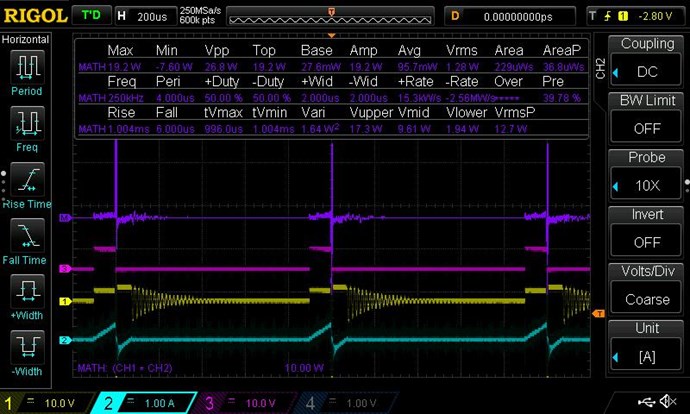
EG:
- 1.28 Watts RMS
- 0.0957 Watt's Average
I have provided all the data you need to prove this for yourself, please go ahead and do so! Its all there, accurate and straightforward. This very clearly shows some engineers don't get it right all the time! Adrian S. Nastase, PHD in Electronic Engineering, does not show these discrepancies, and derives RMS for DC Values, that maybe sometimes he shouldn't, just recently discussed. No disrespect to anyone, I am only making a point.
Best Wishes,
Chris


